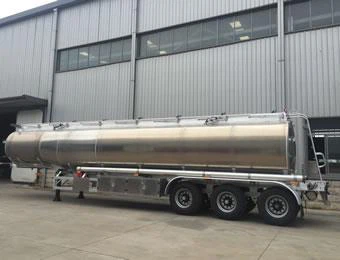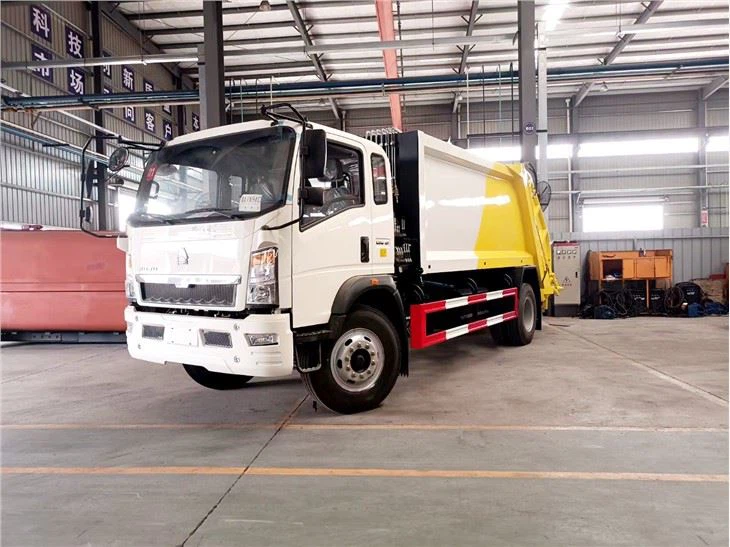Rolling Trucks: Everything You Need to Know

Rolling trucks are a staple in many industries, especially in transport and logistics, but their influence extends far beyond just moving goods from one place to another. This article aims to explore the multifaceted world of rolling trucks, covering their history, types, maintenance tips, and their role in the future of logistics. Whether you’re a logistics professional, a truck enthusiast, or just curious about rolling trucks, this guide has something for everyone.
Table of Contents
- History of Rolling Trucks
- Types of Rolling Trucks
- How Rolling Trucks Work
- Maintenance Tips for Rolling Trucks
- Safety Measures with Rolling Trucks
- Economic Impact of Rolling Trucks
- Future Trends in Rolling Trucks
- Practical Examples of Rolling Trucks
- Rolling Trucks FAQ
History of Rolling Trucks
The history of rolling trucks dates back to the early 20th century when internal combustion engines began to replace horse-drawn carts. The first motorized trucks were simple and designed primarily for heavy loads, revolutionizing the way goods were transported. By the mid-1900s, innovations, such as hydraulic lifts and better suspension systems, improved the functionality and comfort of trucks, making them more accessible for various industries.
The Evolution of Truck Design
As trucks evolved, so did their designs and functionality. From flatbeds and box trucks to specialized vehicles for construction and refrigerated transport, each type of truck caters to specific needs:
| Era | Key Innovations |
|---|---|
| 1920s | Introduction of gas-powered engines |
| 1950s | Development of multi-axle trucks |
| 1980s | Adoption of electronic controlling systems |
| 2000s | Hybrid and electric trucks |
Types of Rolling Trucks
Rolling trucks come in various types, each designed for specific functions. Understanding these types is essential for making the right choice based on load requirements, road conditions, and industry standards.
1. Flatbed Trucks
Flatbed trucks are characterized by their open deck design, which allows for easy loading and unloading of oversized cargo. They are commonly used in construction and agricultural industries.
2. Box Trucks
Box trucks have an enclosed cargo area, protecting goods from the elements. They are often used for moving household items and delivering goods in urban areas.
3. Refrigerated Trucks (Reefer Trucks)
Reefer trucks are equipped with temperature control systems to transport perishable goods such as food and pharmaceuticals, ensuring they remain fresh during transit.
4. Dump Trucks
Dump trucks are primarily used for transporting loose materials like gravel, sand, or demolition debris. Their hydraulic systems allow for quick unloading of contents.
5. Tanker Trucks
Tanker trucks are designed to carry liquids, including fuel, water, or chemicals. These trucks have specialized tanks to prevent spillage and contamination.
6. Pickup Trucks
Pickup trucks are versatile vehicles suitable for personal use, small deliveries, and light cargo transport. Their adaptability makes them popular among contractors and homeowners.
How Rolling Trucks Work
Understanding how rolling trucks operate can help you appreciate their importance and intricacies. Here are the key components:
1. Powertrain
The powertrain consists of the engine, transmission, driveshaft, and differential, converting fuel into motion.
2. Suspension System
The suspension system supports the truck’s weight and ensures smooth handling by absorbing shocks from road surfaces.
3. Braking System
Trucks often have advanced braking systems, including air brakes, which provide stopping power and control when handling heavy loads.
4. Cargo Area
The design of the cargo bed or container depends on the type of truck, tailored to the needs of the specific industry.
Maintenance Tips for Rolling Trucks
Regular maintenance is vital for the longevity and performance of rolling trucks. Here are practical tips:
1. Routine Inspections
Perform regular checks of essential components like brakes, tires, and lights to prevent unexpected failures.
2. Engine Maintenance
Change the oil and replace air and fuel filters as per the manufacturer’s guidelines to keep the engine running smoothly.
3. Tire Care
Check tire pressure frequently and inspect for tread wear to ensure safety and optimal fuel efficiency.
4. Keep It Clean
Regular washing not only maintains the truck’s appearance but also protects against rust and corrosion.
5. Document Maintenance
Keep detailed records of all maintenance activities to track service history and facilitate resale or inspection.
Safety Measures with Rolling Trucks
Safety is paramount when operating rolling trucks. Implementing proper measures can prevent accidents and ensure the safety of drivers and others on the road.

1. Training and Certification
Ensure drivers undergo comprehensive training and obtain necessary certifications for operating large commercial vehicles.
2. Use of Safety Gear
Using seat belts, high-visibility clothing, and other protective gear can significantly reduce the risks associated with trucking.
3. Adhere to Weight Limits
Be mindful of load capacity to maintain vehicle stability and avoid penalties for overloading.
4. Regular Safety Drills
Conduct regular drills to prepare drivers for emergencies, including vehicle malfunctions and accident responses.
Economic Impact of Rolling Trucks
Rolling trucks play a crucial role in the economy, influencing supply chain dynamics and contributing to job creation.
1. Transportation Costs
Rolling trucks are integral to cost-effective freight transport, providing affordable options for shipping goods across regions.
2. Employment Opportunities
The trucking industry provides millions of jobs globally, from drivers to logistics managers, positively affecting local economies.
3. Global Trade
Rolling trucks facilitate global trade by making it easier to transport goods internationally, boosting economic growth and consumer access.
Future Trends in Rolling Trucks
The trucking industry is evolving, with several trends shaping its future. Here are key developments to watch:
1. Electric Trucks
The rise of electric trucks is set to transform the industry, reducing emissions and fuel costs while promoting sustainability.
2. Automation and AI
Advancements in automation and AI are paving the way for self-driving trucks, potentially increasing efficiency and safety significantly.

3. Smart Fleet Management
IoT systems provide real-time data analytics for fleet management, improving operational efficiencies and reducing maintenance costs.
Practical Examples of Rolling Trucks

To understand rolling trucks better, here are a few practical examples that illustrate their versatility.
1. Cold Chain Logistics
Refrigerated trucks are used in the food supply chain to deliver fresh produce to supermarkets, maintaining quality through temperature control.
2. Construction Projects
Dump trucks are essential in construction sites, transporting significant quantities of soil, gravel, and debris efficiently.
3. E-commerce Deliveries
Box trucks help delivery services transport goods quickly and effectively to consumers, meeting the demands of the growing online shopping industry.
Rolling Trucks FAQ
1. What is the average lifespan of rolling trucks?
The average lifespan of a rolling truck is around 15 to 20 years, depending on maintenance and usage.
2. How often should rolling trucks be serviced?
Trucks should be serviced every 10,000 to 15,000 miles or as per the manufacturer’s guidelines to ensure optimal performance.
3. What is the average fuel efficiency of a rolling truck?
On average, rolling trucks get about 6 to 8 miles per gallon, but this can vary based on the truck type and load.
4. Are electric trucks suitable for long-distance transport?
While electric trucks are improving in range, they are currently more suited for short to medium-distance transport, especially in urban settings.
5. What safety features are commonly found in modern rolling trucks?
Common safety features include automatic braking systems, stability control, collision warning systems, and lane departure alerts.
6. How does weather affect rolling truck operations?
Adverse weather conditions can impact driving safety and efficiency. Trucks may have restricted operations in heavy snow or rain, necessitating extra caution and planning.
